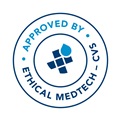G Chantrain
CHU Saint Pierre
Belgium
Title: How I do It: Hemicricoidectomy for a chondrosarcome grade II with immediate reconstruction using a myochondroid flap including the remodeled thyroid ala
Biography
Biography: G Chantrain
Abstract
A 66 years old patient consults for a progressive dysphonia. The fibroscopic examination reveals a partial immobility of the left arytenoid without mucosal lesion. The direct laryngoscopy under total anesthesia shows a sub-mucosal deformation of the left pyriform sinus and the deep biopsy under the hypopharyngeal mucosa shows a grade II chondrosarcoma whose origin – cricoid or thyroid cartilage – could not be specified neither by the CT scan nor by MRI. After a negative Pet scan, a total laryngectomy was proposed to this patient which decide to ask for a second opinion. After examination of the patient and the different images, we proposed a partial laryngectomy with immediate reconstruction in case of safe resection margins. The surgical procedure begins with a left functional neck dissection preserving the vascularization of the sub-hyoid muscles. After a tracheotomy the hyoid attaches of the sub-hyoid muscles are released and a fronto-lateral laryngeal approach is performed in order to conserve the anterior commissure and the vocal folds. Then the progressive sub-mucosal dissection of the thyroid ala demonstrates its healthiness and the presence of a left hemi-cricoid tumor. The section of the inferior crico-thyroid joint allows developing a sub-hyoid myo-cartilaginous flap including the left thyroid ala. And the anterior and posterior vertical mucosal and cartilaginous sections allow resecting the left hemicricoid including the crico-aryténoid joint but saving the left vocal cord. After checking the resection margins, the reconstruction is realized using the pediculed subhyoid myo-cartilagenous flap. The internal side of the thyroid ala is slotted to fold and create an angle imitating the shape of a closer hemilarynx. This remodeled structure is fixed to the front and rear margins of the cricoid, and the left vocal cord and surrounding tissues are sutured to this flap. Definitive histological analyses confirm a grade II chondrosarcoma with safe resection margins and no regional lymph node invasion. Postoperative period begins with an ethyl withdrawal requiring keeping the patient asleep to the 13th day. After intra-operative antibiotic, an episode of pyrexia necessitated its recovery during one week. Because of the innovative nature of this technique, postoperative rehabilitation has been slow and cautious. Rehabilitation of swallowing could begin on the 21st day. The complete oral diet was possible from the 23rd day and the feeding tube was finally removed on day 35. Because of a glottic gap, this patient has a breathy voice. The 27th postoperative day, by direct laryngoscopy, we failed to fullfill the glottic leaks with a hypopharyngeal mucosal flap. Finally, the patient was discharged from hospital on the 36th day with an obturated tracheal cannula. He continues his vocal réhabilitation ambulatory and his voice quality is improving but the tracheotomy weaning was postponed because a laryngeal lipofilling has been organized aiming to reduce the glottic leak.

